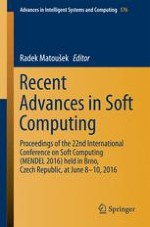2017 | Book
Recent Advances in Soft Computing
Proceedings of the 22nd International Conference on Soft Computing (MENDEL 2016) held in Brno, Czech Republic, at June 8-10, 2016
Editor: Radek Matoušek
Publisher: Springer International Publishing
Book Series : Advances in Intelligent Systems and Computing
